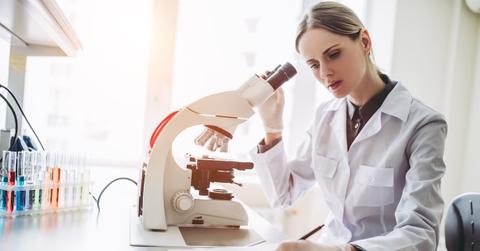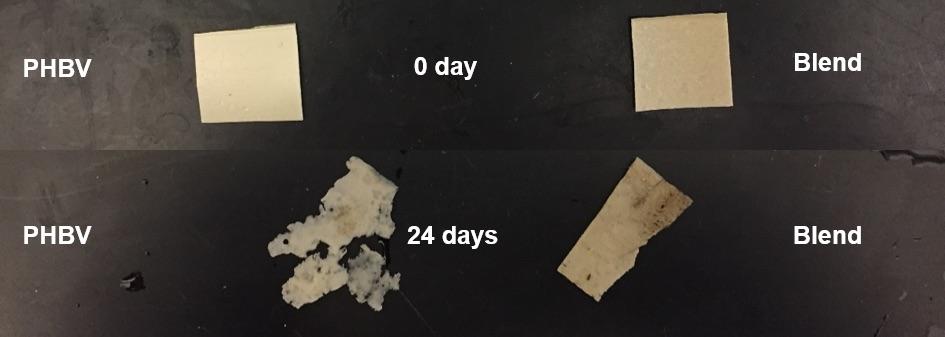New Bioplastic-Rubber Blended Material Could Be the Plastic Packaging Alternative the Earth Needs
The new material is strong enough to replace plastic packaging.
Updated April 9 2019, 1:31 p.m. ET

Researchers from The Ohio State University have developed a biodegradable alternative to plastic food packaging — and if the new material takes off, it could help reduce plastic consumption all over the world. The material is a blend of natural rubber and bioplastic, which the researchers believe is an eco-friendly, physically strong, and affordable substitute to plastic packaging.
As explained in a report in the journal Polymers, the new material is a natural-rubber-toughened poly (3-hydroxybutyrate-co-3-hydroxyvalerate), known as PHBV/NR. The study was led by the university's Xiaoying Zhao, Katrina Cornish, and Yael Vodovotz. As Vodovotz tells Green Matters in an email, the new material is incredibly diverse in application, and it can be used to replace various kinds of plastic, ranging from soft (such as candy wrappers) to hard (such as containers). "We have worked on films and trays and other applications. It all depends on formulation of the blend and processing," she tells us.
Vodovotz also opened up to Green Matters about the team's inspiration behind the project. "We chose materials that were bio-derived, sustainable and biodegradable. Importantly, the blend had to meet the desired final properties to replace petroleum derived counterparts," Vodovotz tells Green Matters. "Depending on these properties, the blends were adjusted and other components added to assure processability and final desired properties."

Vodovotz also spoke with the college's news outlet, Ohio State News, about the project. She told the website that her team was not the first to try combining PHBV with natural rubber, but previous researchers' end results were not strong enough. Food packaging needs to remain intact during shipping, storage, and extreme temperatures (for example, microwaveable frozen meals), and the researchers believe that the new material is finally strong enough to handle various conditions.
“Previous attempts at this combination were unsuccessful because the softness of the rubber meant the product lost a lot of strength in the process,” Zhao told Ohio State News. In tests as part of the study, the new PHBV/NR blend was 75 percent tougher and 100 percent more ductile than regular PHBV that isn't blended with natural rubber.
Vodovotz says that the researchers' goal was to reduce reliance on plastic by innovating a bioplastic alternative with adequate strength, toughness, and affordability. "Our goal is to decrease petroleum based plastics by finding alternative bioplastics with equivalent performance," Vodovotz tells Green Matters. "Therefore, we hope to work with a variety of manufacturers and industrial partners in achieving this goal."
And food manufacturers have already inquired with Zhao, Cornish, and Vodovotz about using the new packaging. "The Ohio State University is not a manufacturing facility," Vodovotz tells Green Matters. "We conduct the research and with the help of commercial partners, we can scale up production and distribution. We are actively seeking commercial partners at this time."
Plastic pollution is a huge issue all over the world. The nonrenewable material can take more than 400 years to biodegrade, and every piece of plastic ever created still exists on Earth today, according to The Telegraph. Not to mention, a 2018 report by National Geographic found that only 9 percent of plastic actually gets recycled. Even more important than consumers working to reduce their plastic use is for manufacturers to utilize plastic alternatives — so if companies really do start using Zhao, Cornish, and Vodovotz's PHBV/NR blend instead of plastic packaging, they could make a huge difference.